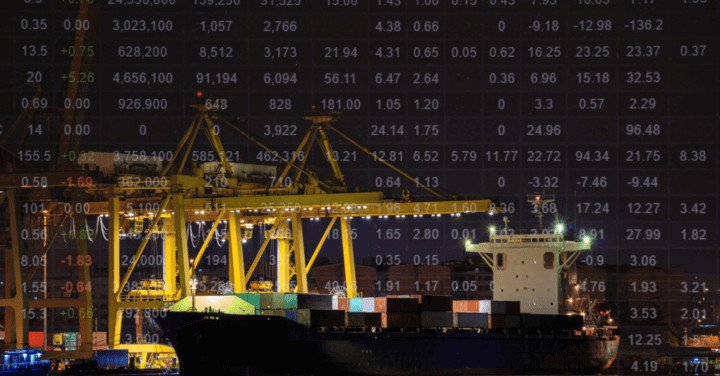Anything you need we are here to help



A freight marketplace may not have the enticing smells and pleasing tastes that come with your typical food marketplace at some nearby parking lot on Tuesdays. Still, it does provide the delicious morsels that help sustain the lives of shippers and carriers. A digital freight marketplace is an online platform that matches shippers with freight to carriers with capacity. Like Expedia or Priceline for hotel rooms, carriers post available capacity and pricing in the marketplace. Shippers can browse for the best-fit option and book with the carrier online instantly. Load tracking, billing, and documentation are managed in the marketplace in real-time. In this blog, we will look at the capability of trade and freight finance in a freight marketplace and the advantages of using this finance through the freight marketplace.
Issues regularly arise in the constantly fluctuating world of the supply chain. The freight marketplace has been created to help mitigate some of those concerns. Here are a few of the areas where a freight marketplace can lend a hand:
Avoiding missed appointments: The busy and congested warehouse situation has bogged down the ability of many truckers to pick up shipments and has meant a glut of appointments have been left unfulfilled. A marketplace automatically polls terminal websites, books appointments, and allows for more rapid pickups and deliveries.
Overcoming the chassis shortage: With the trucking industry going through a shortage of chassis, the turning over of shipments in a timely manner is more critical. Marketplaces help ease that strain by making load matching easier, so trucks move the goods more efficiently.
Reducing idle time: The real-time data-sharing aspect of a freight marketplace can help keep all parties on the same page and limit the time containers and other pieces of equipment are sitting around.
Freight financing, also known as transportation financing, is a way for businesses to be paid almost immediately after delivery. Not long after delivery ( usually within 24 hours), a carrier receives a delivery payment from a factoring company in exchange for a small percentage of the payment — usually between 1 percent and 5 percent. The factoring company then tracks down the payment from the consignee, which can take weeks or even months.
Trade financing is a way to facilitate international trade. An importer gets financing to pay a supplier and then pays back the financer after selling the goods. Financing terms usually come in the form of a monthly payout ranging from 5 percent to 10 percent of the loan’s value. For freight marketplaces like FreightMango, trade finance is the fifth service benefit they offer, along with ocean freight, customs clearance, FPA imports, and API. Integrating trade finance with the freight marketplace gives a “1+1=3” equation because the power of the two combines to create more value than just using the two of them separately.
While trade finance and freight finance both have similar processes, they are two different beasts. The financing in freight finance is strictly for the cargo’s movement — the cargo’s expenses, container capacity, and shipping. The upfront money in trade financing is for shipment funding, equipment, and other trade-related processes. The shipper collects the expected proceeds of selling the goods before they are sold.
There are many advantages to using a freight marketplace with trade and freight finance capabilities. Let’s take a look at some of them:
It can free up working capital: Trade finance enables shippers to preserve cash to reinvest in their business. At the same time, it can offer zero to low-interest rates, allowing you to focus on working capital management and keeping your cost-to-serve down.
Processes are streamlined and more efficient: With a freight marketplace handling trade and freight finance, this means all of the processes — including load tracking, billing, and paperwork — are being handled by experts online in real-time, so there are communication mix-ups that slow things down.
Saving on costs: With the payment reconciliation in the hands of the trade or freight financial staff, your staff does not have to spend money and time trying to track down the payment.
Flexibility is increased: There are numerous ways that your payments can be structured to accommodate your budget and longer-term goals. For instance, payments can be matched to seasonal revenue cycles, anticipated growth, or unexpected pivot goals.
FreightMango benefits: FreightMango, which offers a global digital freight marketplace, provides many other benefits. The platform enables Fulfillment By Amazon sellers to consolidate freight, lowering total shipping costs and increasing security. Customers can clear customs faster and avoid costly delays with FreightMango’s automated customs clearance services. As part of its Ocean Freight Management system, FreightMango can combine differing less-than-container-load shipments into one view that is quotable, bookable, and traceable in real-time.
Clearly, there are quite a few benefits to having trade and freight finance capabilities in a freight marketplace. While the main advantage is that it puts money in the pockets of companies right away, allowing them to invest that capital into new projects, there are some other perks — being able to pick up more shipments, limiting idle time, and a more efficient process, to name a few — that make this financial transaction a worthy option. If those benefits of financing in a freight marketplace are what you’re looking for, your first stop should be FreightMango. We have the first managed freight marketplace that lets you search, find, book, pay, or finance your imports and exports in seconds. So visit our website and get started by signing up to speak to our experts that take your business to another level.

